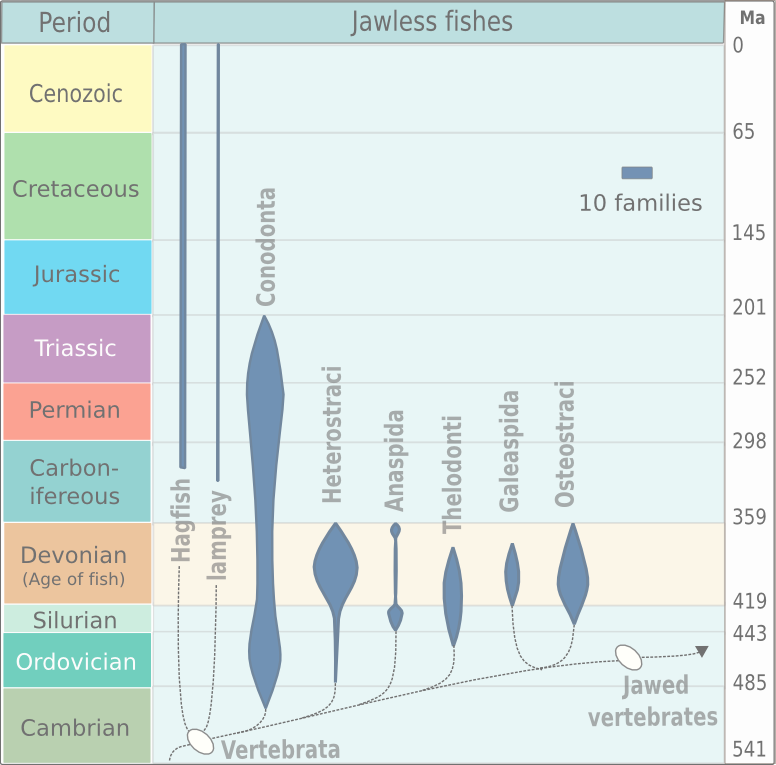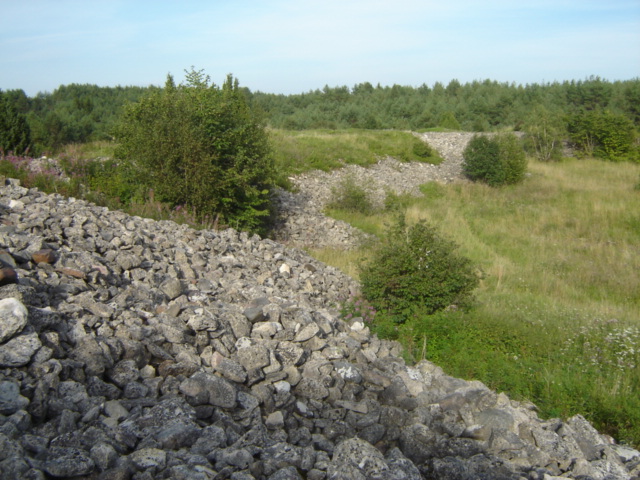|
Phlebolepis Elegans
''Phlebolepis'' is an extinct thelodont agnathan genus belonging to the family Phlebolepididae. Whole fossils are found in Late Silurian (Ludlow epoch) aged strata from Saaremaa, Estonia Estonia, formally the Republic of Estonia, is a country by the Baltic Sea in Northern Europe. It is bordered to the north by the Gulf of Finland across from Finland, to the west by the sea across from Sweden, to the south by Latvia, and t .... ''Phlebolepis elegans'' was average-sized for a thelodont, 7 cm long. References Thelodonti genera Silurian fish of Europe Fossils of Estonia {{silurian-animal-stub ... [...More Info...] [...Related Items...] OR: [Wikipedia] [Google] [Baidu] |
Ludlow Epoch
In the geological timescale, the Ludlow Epoch (from 427.4 ± 0.5 million years ago to 423.0 ± 2.3 million years ago) occurred during the Silurian Period, after the end of the Homerian Age. It is named for the town of Ludlow in Shropshire, England England is a country that is part of the United Kingdom. It shares land borders with Wales to its west and Scotland to its north. The Irish Sea lies northwest and the Celtic Sea to the southwest. It is separated from continental Europe .... The Ludlow Epoch is subdivided into two stages: Gorstian and Ludfordian. Paleontology Arthropods See also * Ludlow Group References *03 Geological epochs {{geochronology-stub ... [...More Info...] [...Related Items...] OR: [Wikipedia] [Google] [Baidu] |
Thelodont
Thelodonti (from Greek: "feeble teeth")Maisey, John G., Craig Chesek, and David Miller. Discovering fossil fishes. New York: Holt, 1996. is a class of extinct jawless fishes with distinctive scales instead of large plates of armor. There is much debate over whether the group of Palaeozoic fish known as the Thelodonti (formerly coelolepids) represent a monophyletic grouping, or disparate stem groups to the major lines of jawless and jawed fish. Thelodonts are united in possession of "thelodont scales". This defining character is not necessarily a result of shared ancestry, as it may have been evolved independently by different groups. Thus the thelodonts are generally thought to represent a polyphyletic group, although there is no firm agreement on this point. On the basis that they are monophyletic, they are reconstructed as being ancestrally marine and invading freshwater on multiple occasions. "Thelodonts" were morphologically very similar, and probably closely related ... [...More Info...] [...Related Items...] OR: [Wikipedia] [Google] [Baidu] |
Agnatha
Agnatha (, Ancient Greek 'without jaws') is an infraphylum of jawless fish in the phylum Chordata, subphylum Vertebrata, consisting of both present ( cyclostomes) and extinct (conodonts and ostracoderms) species. Among recent animals, cyclostomes are sister to all vertebrates with jaws, known as gnathostomes. Recent molecular data, both from rRNA and from mtDNA as well as embryological data, strongly supports the hypothesis that living agnathans, the cyclostomes, are monophyletic. The oldest fossil agnathans appeared in the Cambrian, and two groups still survive today: the lampreys and the hagfish, comprising about 120 species in total. Hagfish are considered members of the subphylum Vertebrata, because they secondarily lost vertebrae; before this event was inferred from molecular and developmental data, the group Craniata was created by Linnaeus (and is still sometimes used as a strictly morphological descriptor) to reference hagfish plus vertebrates. While ... [...More Info...] [...Related Items...] OR: [Wikipedia] [Google] [Baidu] |
Phlebolepididae
Phlebolepididae is an extinct thelodont agnathan family in the order Phlebolepidiformes.Anatomy of the Silurian thelodont Phlebolepis elegans Pander. Mark V. H. Wilson and Tiiu Marss, Estonian Journal of Earth Sciences, 2012, volume 61, issue 4, pages 261-276, References External links * * Thelodonti Prehistoric jawless fish families Silurian first appearances Silurian extinctions {{silurian-animal-stub ... [...More Info...] [...Related Items...] OR: [Wikipedia] [Google] [Baidu] |
Silurian
The Silurian ( ) is a geologic period and system spanning 24.6 million years from the end of the Ordovician Period, at million years ago (Mya), to the beginning of the Devonian Period, Mya. The Silurian is the shortest period of the Paleozoic Era. As with other geologic periods, the rock beds that define the period's start and end are well identified, but the exact dates are uncertain by a few million years. The base of the Silurian is set at a series of major Ordovician–Silurian extinction events when up to 60% of marine genera were wiped out. One important event in this period was the initial establishment of terrestrial life in what is known as the Silurian-Devonian Terrestrial Revolution: vascular plants emerged from more primitive land plants, dikaryan fungi started expanding and diversifying along with glomeromycotan fungi, and three groups of arthropods ( myriapods, arachnids and hexapods) became fully terrestrialized. A significant evolutionary milestone d ... [...More Info...] [...Related Items...] OR: [Wikipedia] [Google] [Baidu] |
Saaremaa
Saaremaa is the largest island in Estonia, measuring . The main island of Saare County, it is located in the Baltic Sea, south of Hiiumaa island and west of Muhu island, and belongs to the West Estonian Archipelago. The capital of the island is Kuressaare, which in January 2018 had 13,276 inhabitants. The whole island had a recorded population in January 2020 of 31,435. Etymology In old Scandinavian sources, Saaremaa is called ''Eysysla'' and in the Icelandic Sagas ''Eysýsla'' (Old Norse: ), meaning "the district (land) of island". The island is called ''Saaremaa'' in Estonian, and in Finnish ''Saarenmaa''—literally "isle land" or "island land",Toomse, Liine. "10 Estonian Islands You Should Visit." http://www.traveller.ee/blog/tallinn/10-estonian-islands-you-should-visit. Retrieved 8 March 2016. i.e. the same as the Scandinavian name for the island. The old Scandinavian name is also the origin of the island's name in Danish ''Øsel'', German and Swedish ''Ösel'', ... [...More Info...] [...Related Items...] OR: [Wikipedia] [Google] [Baidu] |
Estonia
Estonia, formally the Republic of Estonia, is a country by the Baltic Sea in Northern Europe. It is bordered to the north by the Gulf of Finland across from Finland, to the west by the sea across from Sweden, to the south by Latvia, and to the east by Lake Peipus and Russia. The territory of Estonia consists of the mainland, the larger islands of Saaremaa and Hiiumaa, and over 2,200 other islands and islets on the eastern coast of the Baltic Sea, covering a total area of . The capital city Tallinn and Tartu are the two largest urban areas of the country. The Estonian language is the autochthonous and the official language of Estonia; it is the first language of the majority of its population, as well as the world's second most spoken Finnic language. The land of what is now modern Estonia has been inhabited by '' Homo sapiens'' since at least 9,000 BC. The medieval indigenous population of Estonia was one of the last "pagan" civilisations in Europe to adop ... [...More Info...] [...Related Items...] OR: [Wikipedia] [Google] [Baidu] |
Phlebolepis Elegans
''Phlebolepis'' is an extinct thelodont agnathan genus belonging to the family Phlebolepididae. Whole fossils are found in Late Silurian (Ludlow epoch) aged strata from Saaremaa, Estonia Estonia, formally the Republic of Estonia, is a country by the Baltic Sea in Northern Europe. It is bordered to the north by the Gulf of Finland across from Finland, to the west by the sea across from Sweden, to the south by Latvia, and t .... ''Phlebolepis elegans'' was average-sized for a thelodont, 7 cm long. References Thelodonti genera Silurian fish of Europe Fossils of Estonia {{silurian-animal-stub ... [...More Info...] [...Related Items...] OR: [Wikipedia] [Google] [Baidu] |
Thelodonti Genera
Thelodonti (from Greek: "feeble teeth")Maisey, John G., Craig Chesek, and David Miller. Discovering fossil fishes. New York: Holt, 1996. is a class of extinct jawless fishes with distinctive scales instead of large plates of armor. There is much debate over whether the group of Palaeozoic fish known as the Thelodonti (formerly coelolepids) represent a monophyletic grouping, or disparate stem groups to the major lines of jawless and jawed fish. Thelodonts are united in possession of "thelodont scales". This defining character is not necessarily a result of shared ancestry, as it may have been evolved independently by different groups. Thus the thelodonts are generally thought to represent a polyphyletic group, although there is no firm agreement on this point. On the basis that they are monophyletic, they are reconstructed as being ancestrally marine and invading freshwater on multiple occasions. "Thelodonts" were morphologically very similar, and probably closely related, t ... [...More Info...] [...Related Items...] OR: [Wikipedia] [Google] [Baidu] |
Silurian Fish Of Europe
The Silurian ( ) is a geologic period and system spanning 24.6 million years from the end of the Ordovician Period, at million years ago ( Mya), to the beginning of the Devonian Period, Mya. The Silurian is the shortest period of the Paleozoic Era. As with other geologic periods, the rock beds that define the period's start and end are well identified, but the exact dates are uncertain by a few million years. The base of the Silurian is set at a series of major Ordovician–Silurian extinction events when up to 60% of marine genera were wiped out. One important event in this period was the initial establishment of terrestrial life in what is known as the Silurian-Devonian Terrestrial Revolution: vascular plants emerged from more primitive land plants, dikaryan fungi started expanding and diversifying along with glomeromycotan fungi, and three groups of arthropods (myriapods, arachnids and hexapods) became fully terrestrialized. A significant evolutionary milestone during t ... [...More Info...] [...Related Items...] OR: [Wikipedia] [Google] [Baidu] |





